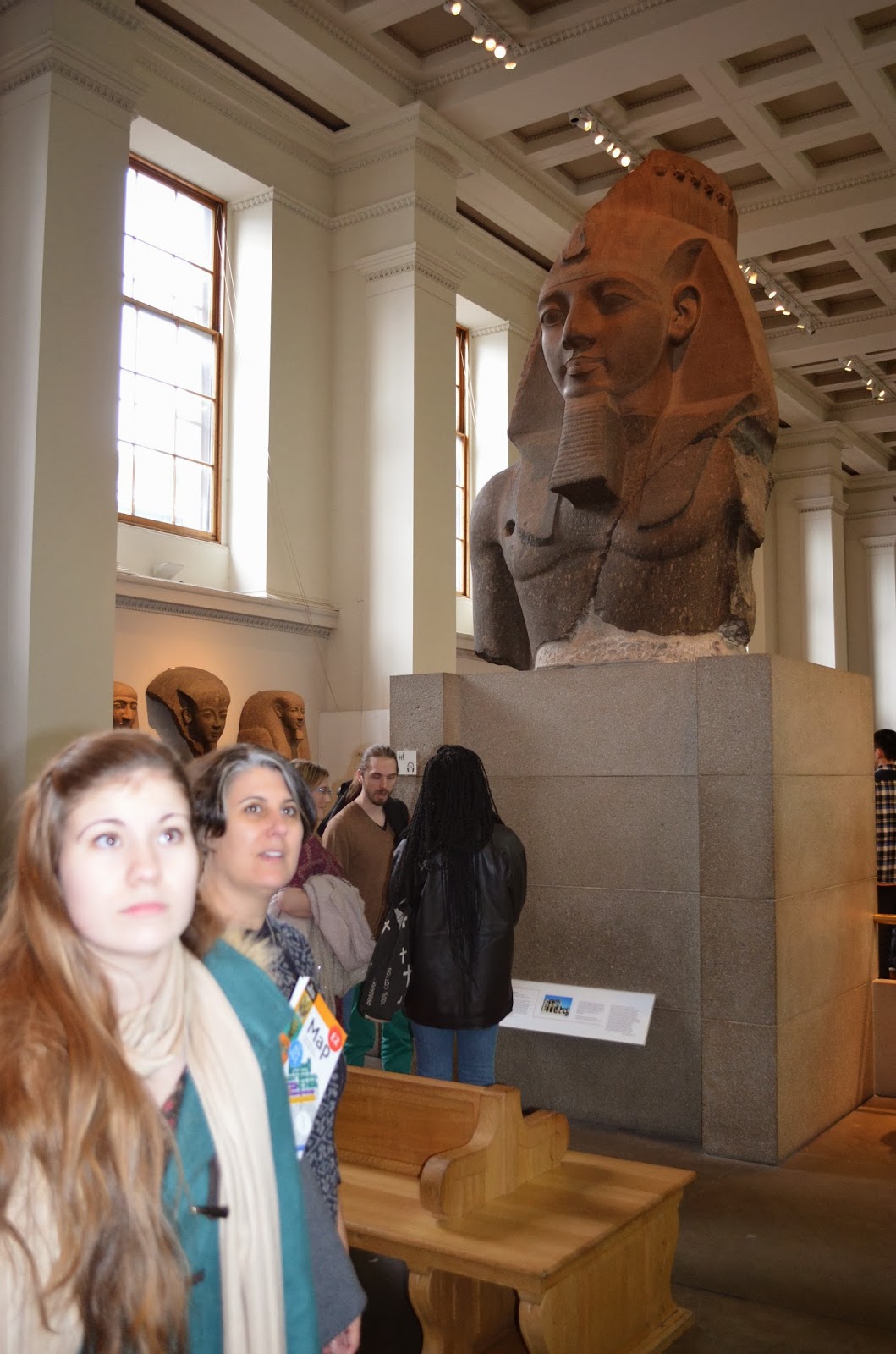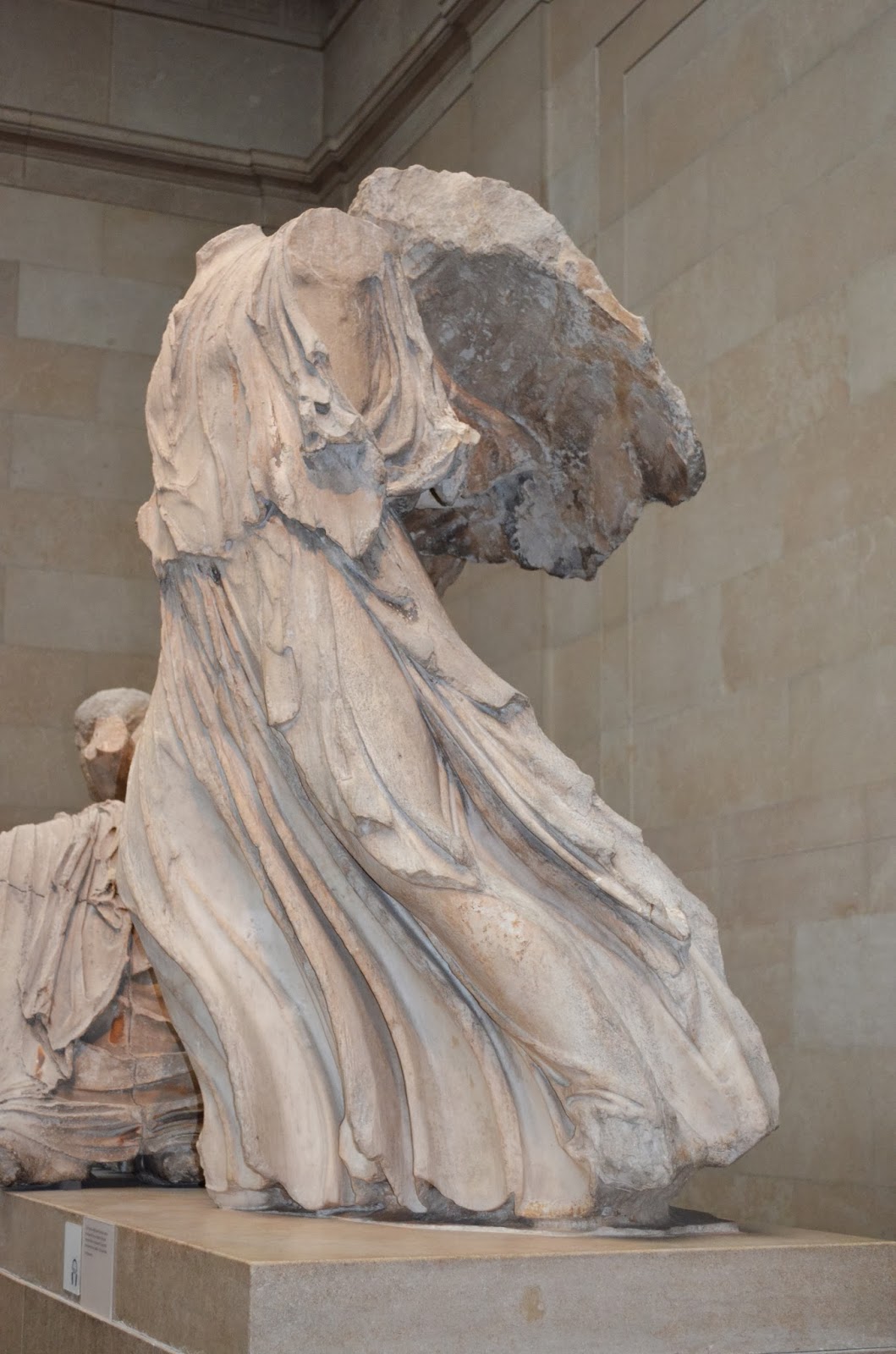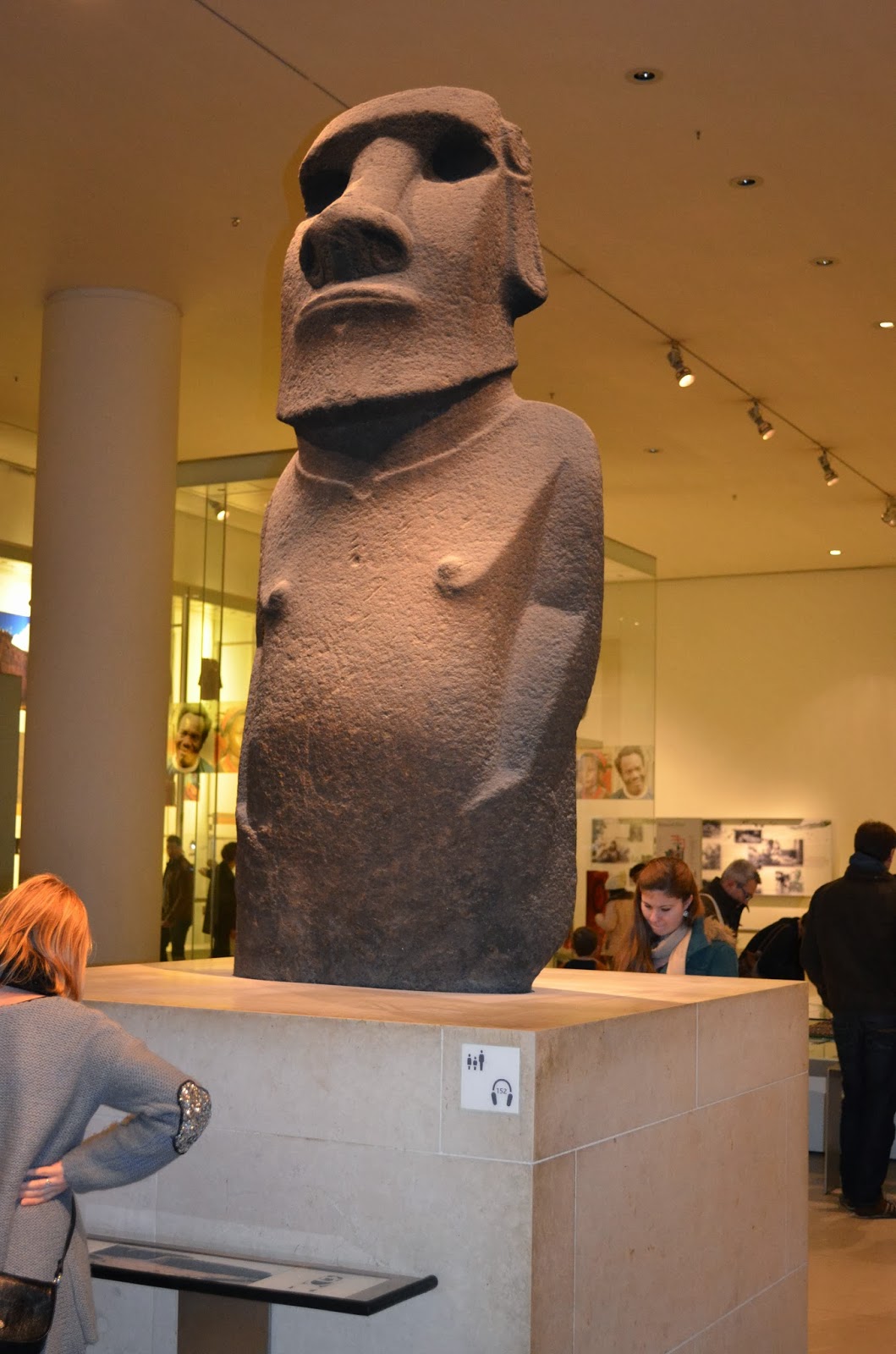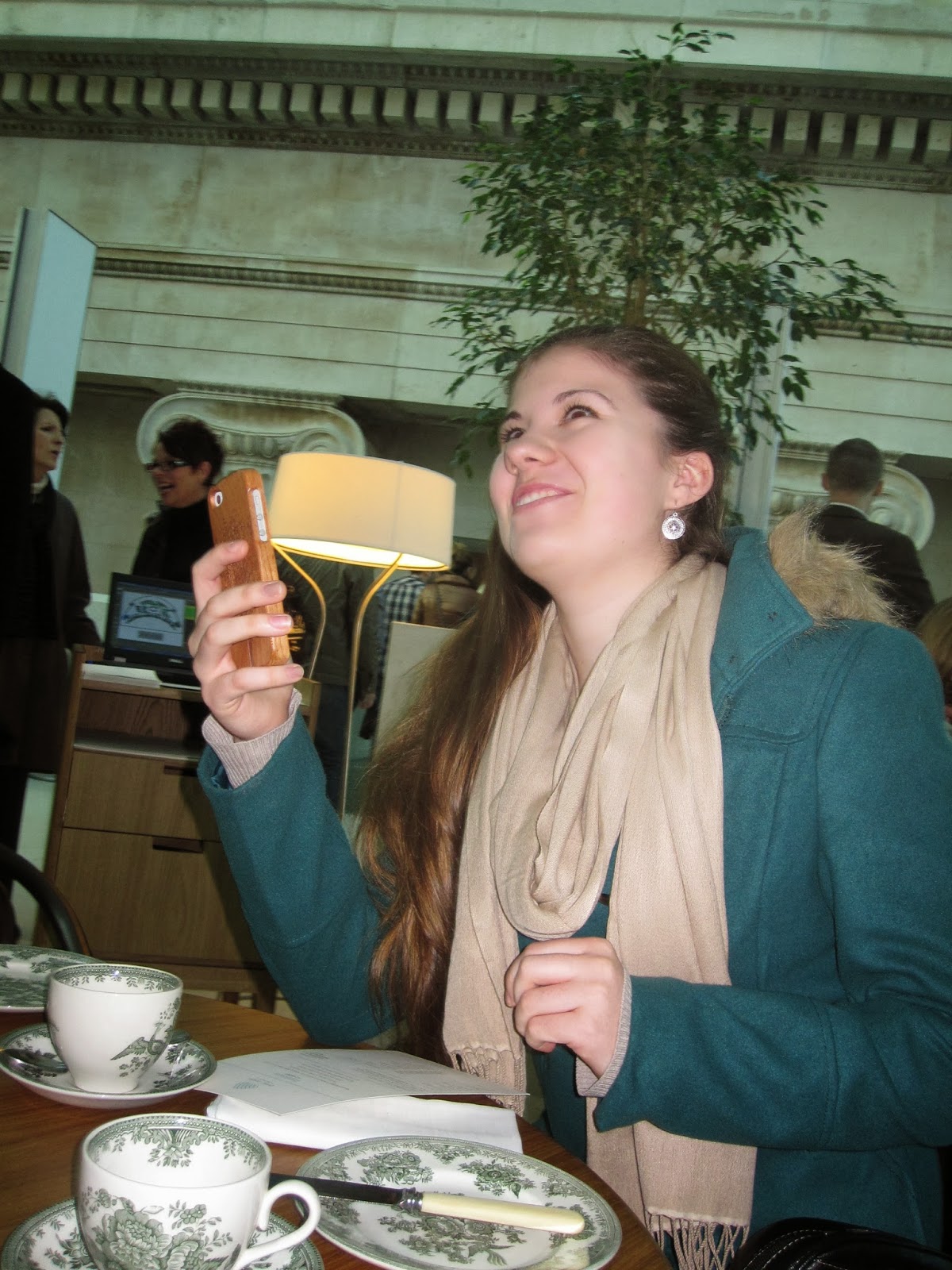 |
| South American mosaic face - Cool or not? |
I don't think that Cambridge actually has a 'scene'. Buses stop around 10:30 and most of the youth disappear to either their study desks (you don't chuck away a chance to study at this University), into London or over to Norwich which apparently is a really happening place. (I wouldn't trust this information) The very busy Corn Exchange provides one nights of touring acts and classical music performances are everywhere for those 'descending into the vale of a certain age'(Coleridge).
 |
| Magnificent space - Museum Courtyard |
I admit that I feel more at ease with THEN rather than NOW, so museums and galleries are where I get my thrills. These excited tingles and a true sense of place in time and culture are delivered in abundance at the British Museum.
This is a fairly serious place, designed to attract the cerebral thrill seeker rather than the adventure tourist. You won't get to experience a tall ship excursion to the antipodes like Banks in the Enlightenment room, or dig out sea dinosaur fossils from genuine Lime Regis Cliff face like Mary Anning discovering Britain's first Ichthyosaurus. There are no large rooms devoted to a chariot battle ride between Mesopotamian kings or filled with tacky boards filling the gaps between the marbles Lord Elgin bought back from the Parthenon in which to watch the reenactment of Socrates trial and suicide. Yet looking at these objects on their stark pedestals and lined up in their glass cabinets surrounded by laser alarms and do not touch signs; the past seeps out to challenge your understanding of humanity.
The Rosetta stone was the key to linguists like Jean Champollion and Thomas Young to crack the ancient Egyptian language. We still have no real concept of how it sounded but those in the know can tell us what is says. It is a remnant from a stela informing the locals of Rosetta about how great the current Ptolemy Pharaoh was and his tax cuts for them. The French soldiers, who had orders from Napoleon to let his scholars see anything with script, knew not to add it to the defence wall they were building from the ruins around them. The English beat the French in the desert battle and took the stone back to England. The French had taken a rubbing of the text and the race was on for academic glory. How cool is that!
 |
| Drain holes at the base made us think of bathtime - but no. Preserve the body and your soul can live forever. |
 |
| Giant scarab |
(Museum thrills!)
Fun fact 1 - the word mummy is an English phonetic approximation of the Arabic word for the bitumen that they thought the corpses had been dipped in for preservation. (Egypt was an Arabic country when the archaeologists came to town.)
Fun fact 2 - the origins of the party game 'Pass the Parcel' may be found in the slightly macabre fashion of wealthy Edwardian tourists buying a mummy as a souvenir from their trip to Egypt and having an unwrapping ceremony in candle lit drawing rooms. Guests sat in a circle around the mummy and each person unrolled one bandage, keeping any of the precious amulets found for their own. They kept unwrapping until the corpse was revealed. I bet there were a few burnt feathers and smelling salts used at those parties.
Fun fact 3 - If the tourist could not afford a whole mummy, the traders would happily lop off the limb or head they could pay for. A couple of examples were bought back by Sir Nicholson and now reside in the Sydney University Museum named after him. An excellent venue for Yr7 History excursions.
Abusing cultures you don't understand by word or deed is not cool.
 |
| Looking from one face of Ramses to another - not many similarities. |
 |
| The Shabako stone. It's use as a threshing stone and perhaps a foundation stone has destroyed many of the glyphs. |
 |
| Elgin's Marbles : today his triumph would be called theft and he'd spend some serious time in jail for smuggling. |
 |
| Imagine the rest of the beast |
 |
| A child running to serve. How do you get such life from stone? |
 |
| M thought she needed her back scratched |
 |
| Half of an Assyrian gate |
 |
| In the Pacific room They only took a little one from Easter Island |
Beauty is cool!
 |
| The Standard of Ur - Peace panel (the opposite is the war one) Dated to around 2600BCE |
 |
| Advised that you can see these objects in an hour - I don't think so! Too many distractions around them! |
As we sat and enjoyed the rest from our rip around following the top ten guide, we noticed a group of well dressed individuals walking past with Bible tour stickers on their chests. What a great Sabbath afternoon activity that would be (maybe without the stickers though).
 |
| Putting photos of M being the fourth tea pot on FBk |
 |
| Crockery to colour coordinate with the marble and ficus |
 |
| 'Discussing' how Willow and I were going to divide the Victoria sponge fairly |
 |
| Why is funny not the same as cool? |
 |
Nicolas Santinaque has gained Tumblr stardom |
Help is at hand. Prof. Dinerstein has put together an 'American Cool' exhibition at the Smithsonian's National Portrait Gallery. It runs from Feb 7 to Sept 7 2014. I'm sure there will be an online viewing available for those wanting to see this academic's interpretation.
Quoted from an interview about the exhibit the Professor says - "The exhibit and book represent inquiry into one question: "What do we mean when we say someone is cool?" We can all point to people – both public figures and those in our own lives – to which we attribute this supreme compliment. However, there has been little analysis of this key concept and how it works in American life. The three essays in the book present the analysis of the concept’s origins, shifting meanings and cultural work. The icons are the avatars of the concept. To be “American Cool” – in the sense of the exhibit – a person had to create an original persona in American life, one without precedent.
In short, the exhibit presents the successful cultural rebels of American culture over the past century. Cool always carries a social charge of rebellious self-expression, edge, charisma and mystery.
Any discussion of what’s cool is superficial: “cool” is a synonym for what’s trending, what’s in-style or what’s in-vogue. We don’t need the concept of cool for that analysis of consumerism nor to recognize that we simply say “cool!” to mean, “I like that,” “I’m good with that.”
More to read here - http://www.myneworleans.com/Blogs/Uptown-Life/February-2014/The-Tulane-Professor-Defining-Cool/
So all is not lost - someone, somewhere has cool in a Gallery - the rest of us museum nerds can breath a sigh of relief that we are not completely cut off from current culture.
Have just found this http://www.theschooloflife.com/shop/how-to-be-cool/?sku=3828
Alain de Botton has written lots of philosophical type books that are very entertaining. His book 'Religion for Atheists' looks at how humanity without faith struggles to live life well but does not preach or theologise. I am going to buy 'How to Travel'. His latest is 'The News, a user's manual' He has also founded 'The School of life' here in London and I will try to get into one of his courses. Not sure that 'How to be cool is quite the one for me! Check him out here http://alaindebotton.com/ I like 'cool' thinkers.
Just Read:
The Gourmet by Muriel Barbery
Author of one of my favourite all time novels The Elegance of the Hedgehog
Author of one of my favourite all time novels The Elegance of the Hedgehog
Both published by Gallic Books, translated from French by Alison Anderson 2010
The great food critic lies on his deathbed (those who have read Elegance will recognise Renée's voice in the 2nd chapter).
He craves a flavour that he cannot identify and trips through his memories while those from his life share with us their eulogies without fear of his audience. Perhaps taste is not what he sought, but a state of being.
The protagonist is not a likable persona and the story less 'unveiling' than 'The Elegance'. The chapter shared by his cat, Rick(named after the character in Casablanca) is perhaps my favourite although the dog gourmet is an anecdote to be savoured again.
"I wrote pieces inspired by the greatest chefs' menus claiming that I had penetrated its secret. What an idiot, what a pity ... I invented mysteries where there were none, in order to justify my perfectly pathetic metier. What is writing, no matter how lavish the pieces, if it says nothing of truth, cares little for the heart, and is merely subservient to the pleasure of showing one's brilliance? p45
"People think that children don't know anything. It's enough to make you wonder if grownups were ever children themselves once." p71
http://www.amazon.com/Gourmet-Muriel-Barbery/dp/1906040265
http://www.goodreads.com/book/show/6366085-gourmet-rhapsody
http://www.amazon.com/Gourmet-Muriel-Barbery/dp/1906040265
http://www.goodreads.com/book/show/6366085-gourmet-rhapsody





No comments:
Post a Comment